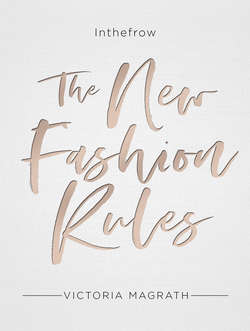Читать книгу The New Fashion Rules: Inthefrow - Victoria Magrath - Страница 11
Оглавление3
June 2000
Net-A-Porter rides the dotcom boom
Natalie Massenet hit the launch button on her revolutionary new idea. What if the population would like to buy luxury fashion online, from a curated selection of the best premium items in the market? Everyone in the industry had advised her against it. After all, it was only six years since the first item ever was sold online, and for Natalie, everything was riding on this idea being a success. What if no one wanted to spend thousands of pounds on handbags they had never seen in person? And what if the consumer wanted to go into the store to spend their hard-earned salary, rather than trusting an online website? Those questions among hundreds more could have halted Natalie in her tracks and stopped her from publishing the magazine-style shopping website for designer fashion, Net-A-Porter. She could have lost everything from investing in an idea that may have immediately flopped. But who knew that this venture would lead to 9.5 million orders made in 2017? Without a physical store to show off the products, or a changing room for customers to try them on, selling luxury fashion to an online consumer was risky business. But her gut instinct paid off, and Net-A-Porter is now one of the top 50 online-only retailers in the world. Luxury fashion was online and here to stay.
Natalie Massenet (Matthew Lloyd/Bloomberg via Getty Images)
Net-A-Porter started a trend. It showed the luxury world what could be done and how it could be a success. In its wake, the majority of luxury brands around the world began developing their own online stores. And it wasn’t just brands that followed – many companies were also looking to follow in Natalie’s footsteps. Mytheresa went online in 2006, Matches Fashion and Farfetch in 2007, Selfridges developed their e-commerce site in 2010 and Monnier Frères in 2011.
Luckily for other entrepreneurs with big ideas, there have been a number of success stories similar to Net-A-Porter. Pure-play retailers have a great advantage in terms of reduced costs on logistics and physical-store overheads, but they also benefit from their exclusivity. Miss it once and it’s gone forever. Thus, there are now a multitude of hugely successful, online-only retailers.
My favourite online success stories
Black Milk Clothing
Black Milk Clothing launched in 2009 selling colourful, unique leggings to the Australian consumer, swiftly becoming global and building a cult-like following. What started in the founders’ kitchen turned into a multi-million-dollar brand with millions of followers and a tribe of loyal customers. And they did it all with zero advertising budget. Word of mouth was all they needed; that, and a global distribution network, a product that was unique in the market and a cool social-media strategy.
Boohoo and Missguided
Boohoo and Missguided are further success stories from the North of England, both developing into huge online retailers with 2.5 million-plus Instagram followers and a foot firmly placed in the high-street retail market. It’s not surprising that in 2016 Missguided made £206 million in profits, while Boohoo made £294 million. And luckily for Boohoo, with such staggering profits they were also able to acquire the huge, yet recently bankrupt, American fashion brand Nasty Gal for £20 million.
Revolve Clothing
Revolve Clothing launched in 2003 in the hope of inspiring women with their youthful, Coachella-vibe clothing. Something fresh in a stale market. The brand exploded over the following years, creating an image that isn’t in any way replicable. They had a unique vision, took early advantage of the growing influence of bloggers and instagrammers (content-creators) and invested time in girls who would become unofficial ambassadors of the brand. Being part of the Revolve ‘family’ is cool and idolised, as their strategy involves lavish trips to the Hamptons, Mexico and the Turks and Caicos islands, and, of course, holding their own festival at Coachella. I can vouch for the trips being just as incredible as they look on social media. They set their goals and didn’t let up.
Triangl bikinis
Triangl bikinis started in 2012 and now turns over $45 million annually. It succeeded in a relatively unexplored marketplace with beautiful and affordable swimwear that broke the mould. And luckily, it garnered the attention of the likes of Miley Cyrus and Kendall Jenner, leading to a push in sales and a widespread frenzy to buy into the cool Australian brand. It now has over 2.8 million Instagram followers and is one of the most distinguishable swimwear brands in the world.
